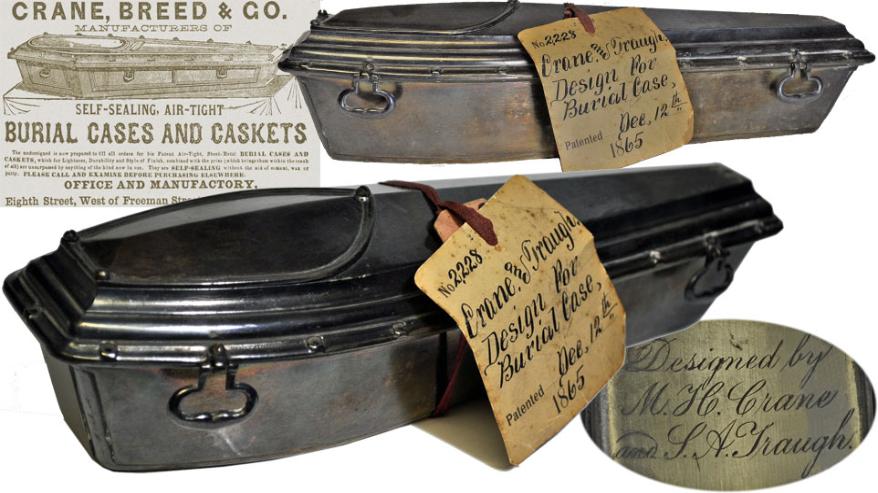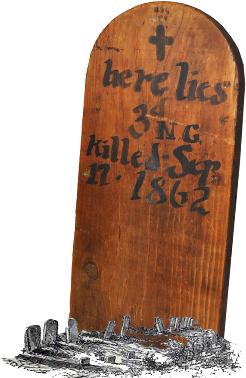


Illustrated above from the Hayes Family Collection is the original Patent model submitted in 1865 by Martin H. Crane and Samuel A. Traugh (listed in period directories as a foreman of Crane, Breed & Co) for an improved seamless, sealable coffin. The model retains its’ original U. S. Patent Office tag recording the award on Pat. 2228 . Company flyers touting the features of its newly designed casket advised:
A delay of days or weeks, awaiting the arrival of absent friends, is entirely practicable. When due attention is given in sealing, which may, with care, be accomplished by anyone . . . bodies may be carried to any part of the globe at any season of the year, with perfect safety.
The new sealing feature in combination with traditional Victorian era toe-pincher shape and removable viewing plate served the Crane & Breed Co. well as recovery of the fallen from burial grounds across the South continued in mass in the earliest post-Civil War period.

This hastily constructed marker identified the burial location of casualties of the 3rd North Carolina after the Battle of Antietam (Sharpsburg). It serves to remind us here that both Union and the Confederacy dearly paid the WAGES OF WAR. Less frequently able to properly care for their fallen, this marker for Confederate loss was likely placed by area citizens who in the aftermath tended to the gruesome service of caring for the dead . With a Confederate casualty total well in excess of 10,000, men lay unburied for days leading to additional losses of an untold number of local citizens from disease. The Adjutant of the devastated 3rd North Carolina later recorded that with five hundred and twenty of the Regiment engaged, only one hundred and ninety could be accounted for after the battle.






